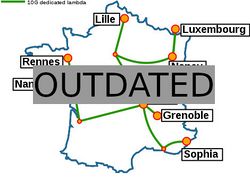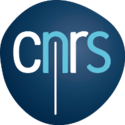Grid5000:Home: Difference between revisions
No edit summary |
No edit summary |
||
| Line 27: | Line 27: | ||
<br> | <br> | ||
{{#status:0|0|0|http://bugzilla.grid5000.fr/status/upcoming.json}} | {{#status:0|0|0|http://bugzilla.grid5000.fr/status/upcoming.json}} | ||
<br> | |||
{{#publications:}} | {{#publications:}} | ||
Revision as of 11:17, 23 March 2018
|
Grid'5000 is a large-scale and versatile testbed for experiment-driven research in all areas of computer science, with a focus on parallel and distributed computing including Cloud, HPC and Big Data. Key features:
|
Five random publications that benefited from Grid'5000 (at least 2517 overall):
- Gustavo A Salazar-Gomez. Transformer-based Lidar-RGB Fusion for Semantic Grid Prediction in Autonomous Vehicles. Computer Vision and Pattern Recognition cs.CV. 2022. hal-03943226 view on HAL pdf
- Radita Liem, Shadi Ibrahim. Revisit Data Partitioning in Data-intensive workflows. PDSW 2022 - 7th International Parallel Data Systems Workshop, Nov 2022, Dallas, United States. hal-03913369 view on HAL pdf
- Marie Delavergne, Geo Johns Antony, Adrien Lebre. Cheops, a Service to Blow Away Cloud Applications to the Edge. ICSOC 2022 - 20th International Conference on Service-Oriented Computing, Nov 2022, Sevilla, Spain. pp.530-539, 10.1007/978-3-031-20984-0_37. hal-03926688 view on HAL pdf
- Nathalie Azevedo Carvalho. Un modèle informatique biologiquement réaliste des oscillations neuronales pathologiques observées dans la maladie de Parkinson. Informatique cs. Université de Lorraine, 2022. Français. NNT : 2022LORR0077. tel-03765515 view on HAL pdf
- Aria Gheeraert, Laurent Vuillon, Laurent Chaloin, Olivier Moncorgé, Thibaut Very, et al.. Singular Interface Dynamics of the SARS-CoV-2 Delta Variant Explained with Contact Perturbation Analysis. Journal of Chemical Information and Modeling, 2022, 62 (12), pp.3107-3122. 10.1021/acs.jcim.2c00350. hal-03708020 view on HAL pdf
Latest news
Failed to load RSS feed from https://www.grid5000.fr/mediawiki/index.php?title=News&action=feed&feed=atom: Error parsing XML for RSS
Grid'5000 sites
Current funding
As from June 2008, Inria is the main contributor to Grid'5000 funding.
INRIA |
CNRS |
UniversitiesUniversité Grenoble Alpes, Grenoble INP |
Regional councilsAquitaine |


